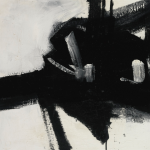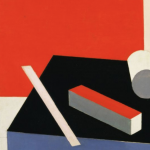2003
A personal account by novelist Joseph McElroy of the WTC crash (that is: a structure of some outside and inside project encompassing one individual).
Against the conflation of Islamic and economic fundamentalisms (William S. Wilson responds to Nick Spenser).
In a letter to Eye magazine, ebr's editor, publisher, and designer respond to criticism of the website's appearance
In the triad of Verso pamphlets on 9/11, Nick Spencer sees a convergence of postmodern critique (against the capitalist culture of postmodernity).
The WTC attack considered as a conflict between open and closed systems, a one-system people and a many-system people.
To understand differences between Islamic and Western aesthetics, Nick Spencer argues, is not the way to understand the WTC attacks.
New media in a book, metafiction in hypertext: the printed book, as yet, is the more hospitable medium. (The New Media Reader; Figurski at Findhorn on Acid.)
Chris Messenger achieves a rare convergence of elite and popular cultural criticism by doing for The Godfather (and its spinoffs) what previous critics have done for Uncle Tom's Cabin.
Human waste takes center stage in Dominique Laporte's unusual microhistory, a book as valuable for the anecdotes as for its argument.
According to Amy Elias, Paul Maltby's negation of the mystical Other forecloses 'the most interesting conversation': between a critic who does not believe in visionary moments and those writers and critics who do believe in them.
On Amy Elias's view of fabulation in the moment of American corporate power, a postmodern novelistic aesthetic that is consistent with Sir Walter Scott's early nineteenth-century mix of romance and Enlightenment-inspired historiography.
2002
Against the notion that music is the most abstract of art forms, Olivia Block thinks of music as a language with its own vocabulary of sounds, patterns, rhythms, notes. On the day of a performance in Kyoto, Japan, these reflections alter Block's sense of her own language, English, deconstructed by Japanese advertisements, tee-shirts, "American" candy-bar wrappers, and text-cell phones.
An argument against the collapse of categories by an author who has, yes, himself perpetrated a few codeworks.
A generous selection, with commentary and biographical background, for those coming newly to Matthias's work.
Rita Raley on the varieties of code/text, as discovered in the object-oriented aesthetic of Mez, Ted Warnell, Talan Memmott, Alan Sondheim, and others.
Virginia Kuhn reviews an essay collection - Cybertext: Yearbook 2000 - ambivalent about its own printed status.
Recent fiction by Curtis White, Alex Shakar, Michael Martone, and others read through the lens of Gertrude Stein and Wittgenstein.



